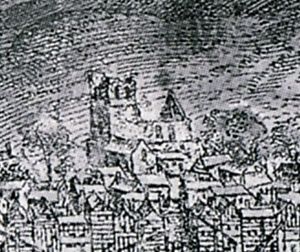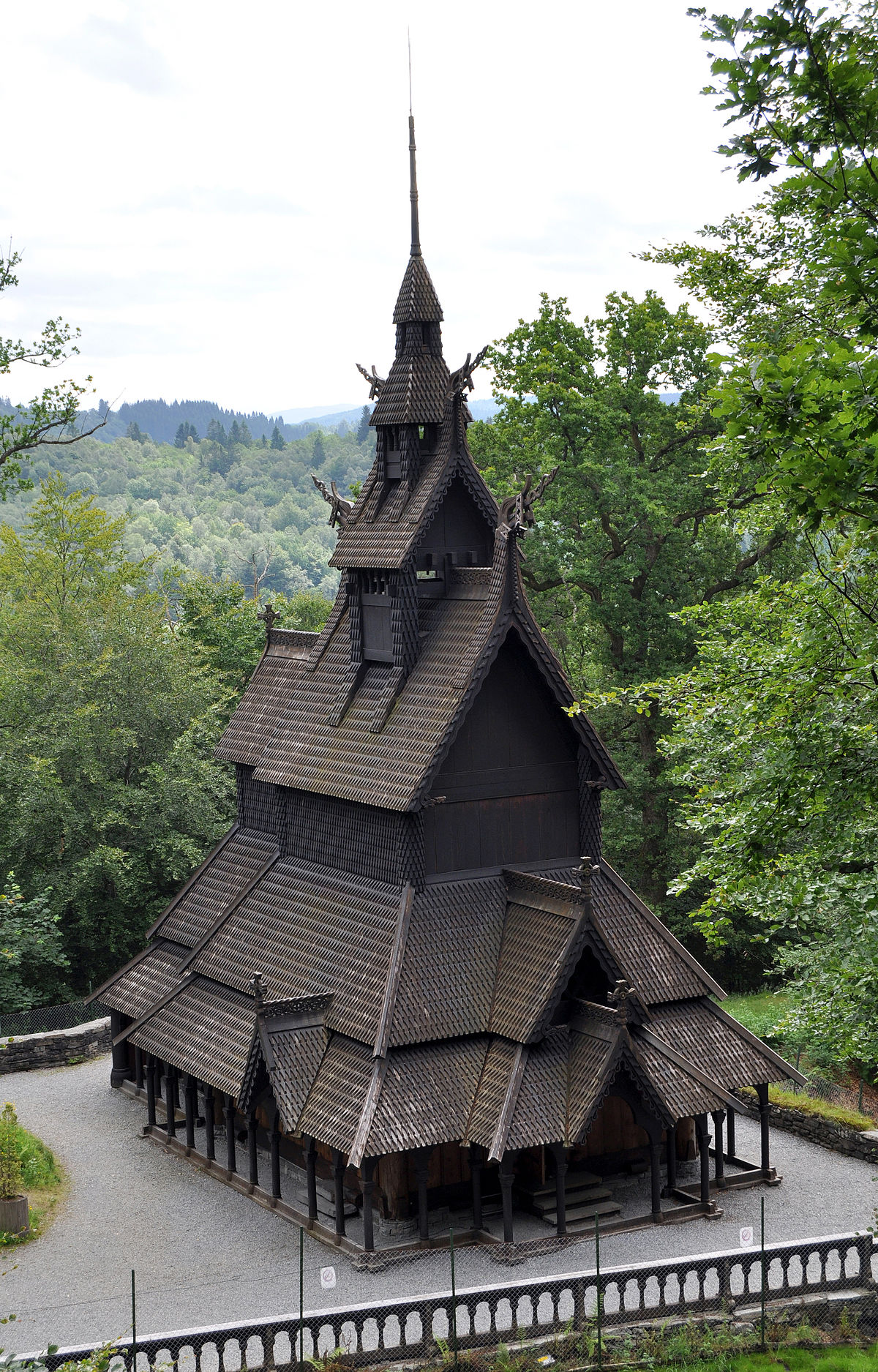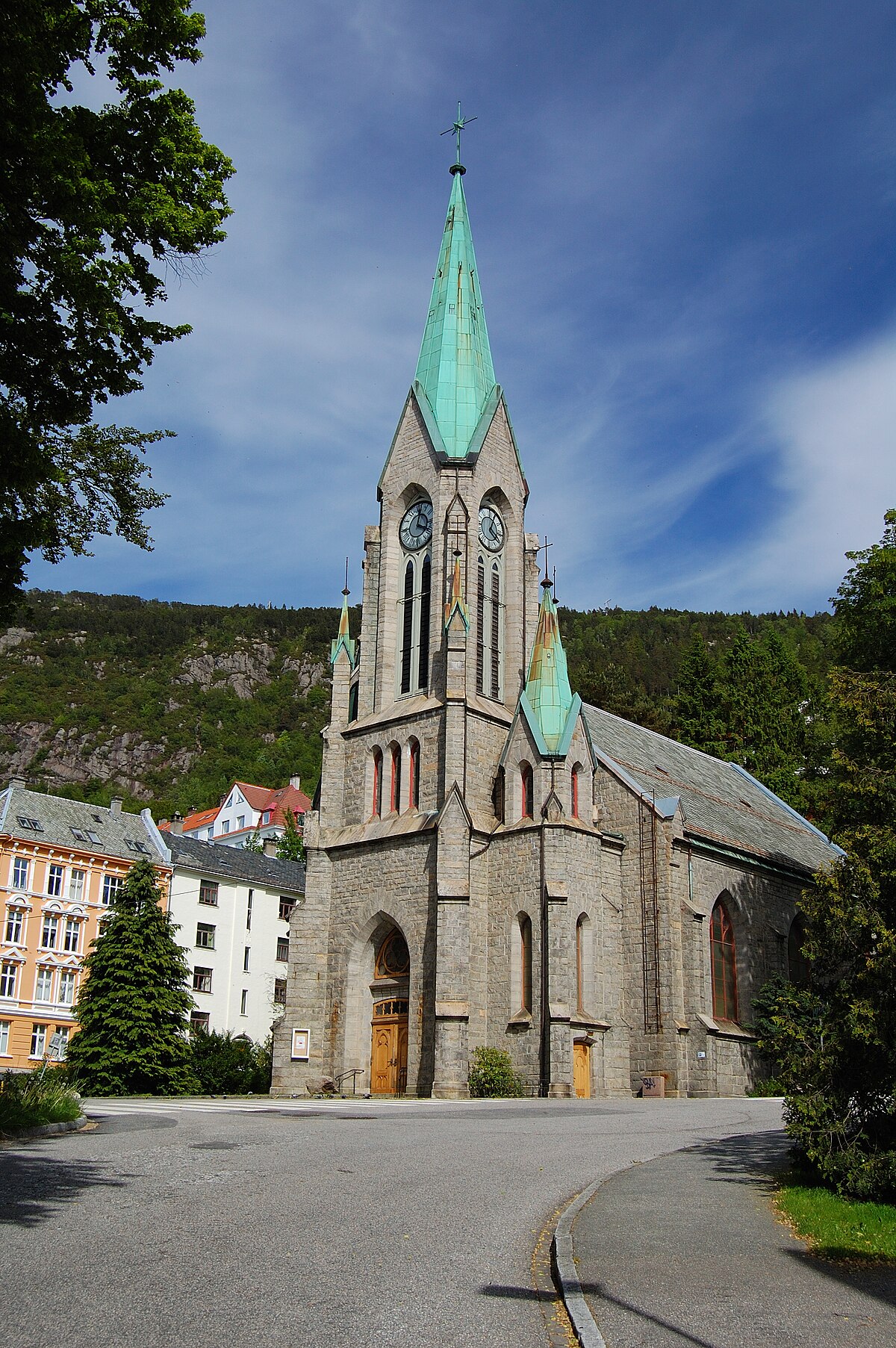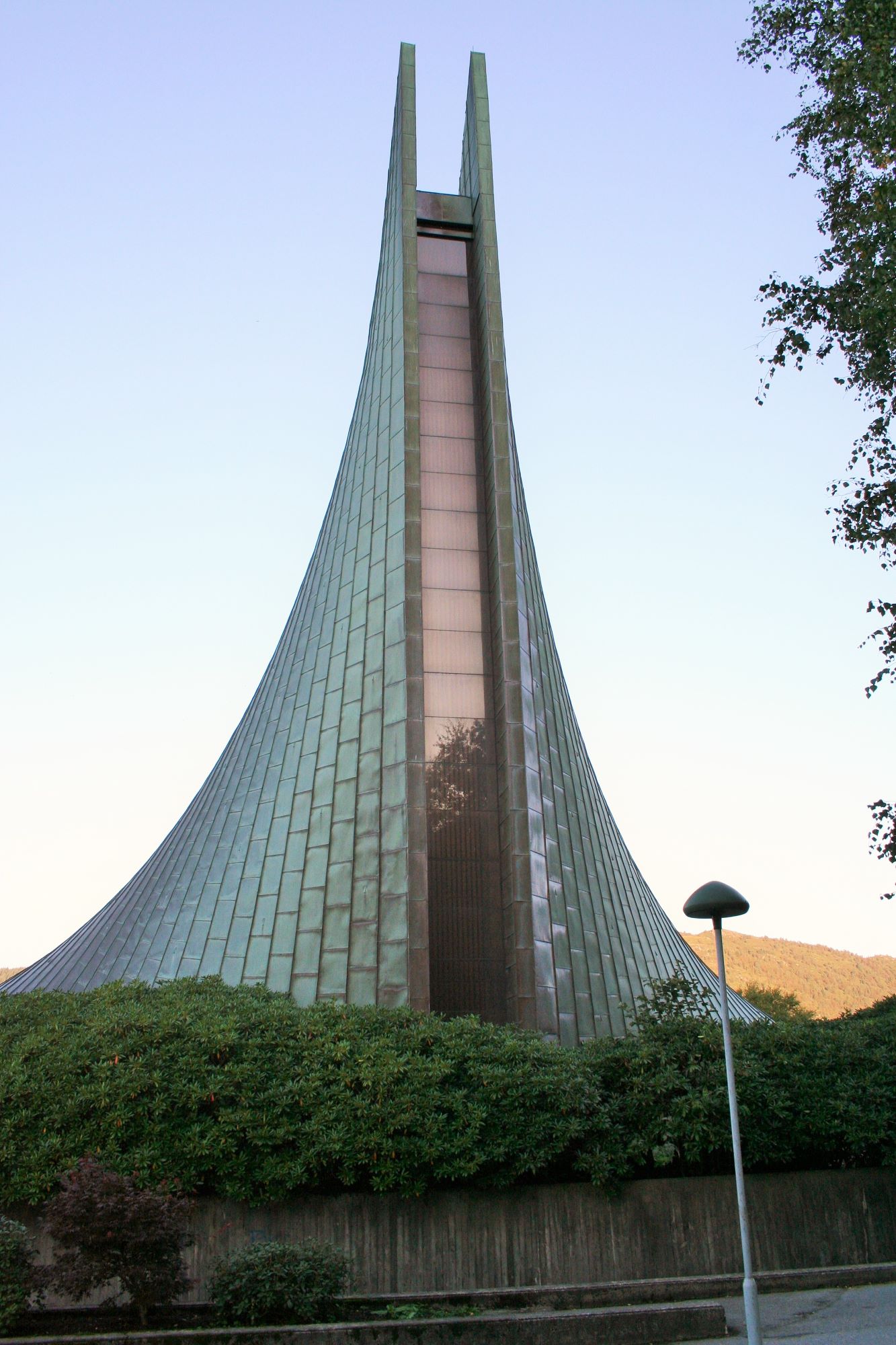A Walk Through the Bergen Fortress
- 0 comments
- by Emma
The Bergen fortress is located roughly between the cruise ship terminal and Bryggen, making it a very convenient place for visitors to explore. It is one of my favourite places to take to, simply because there’s so much history there. Everywhere you look, you hear about Kings, Armies, War and renovation. It’s incredible.
If you’re in Bergen and want to walk somewhere that’s maybe a little quieter than the town centre, or you love history, the fortress is for you!
On the 5th of May 2020, I went for a walk through the fortress and took some photos of all the buildings. I used the free museum guide that you can either pick up from Håkon’s Hall or the Rosenkrantz Tower, or you can download it online by clicking the link:
For my walk below, I have added a little bit of information and changed the walking path slightly. I am interested in reading stories about places, not just simply what a place is. So I’ve added that to my walk.
Table of Contents
History of the Bergen Fortress
The Royal Estate
When Olav Kyrre officially founded Bergen in 1070, the Bergen Fortress was to be the site of the new royal estate. The royal estate (at Alrekstad) was too far away from the harbour, Vågen, so Olav Kyrre had it moved.
Olav Kyrre had the Small Christ Church (Lille Kristkirken) built on the land, Holmen, and laid the foundations for the large Christ Church (Kristkirken), the towns medieval cathedral, in stone.
The next King of Norway, King Øystein Magnusson, moved the royal estate from Alrekstad to Holmen in the 1100s. He began building residences for the royals there.
A Stable Kingdom
After the various civil wars in Norway, King Håkon Håkonsson (King of Norway 1217-1263) took his seat as King of Norway. He made Holmen his residence. Norway became more permanently united under a single, national monarch. The royal residence had to become a more up-to-date fortified complex of stone buildings. Under Håkon Håkonsson, Bergen became the first true capital of Norway. The complex of new buildings at Holmen developed into the country’s political centre.
During Håkon Håkonsson’s and King Magnus the Lawmender’s reign, Håkon’s Hall and the ‘Keep by the Sea’ (present-day Rosenkrantz Tower) were constructed. Additionally, several other royal buildings and a defensive wall finalised the fortress.
A wall was also placed around the estate, and various other royal buildings were constructed.
The Danish Military Base
At the beginning of the 16th century, Norway was becoming part of the Danish kingdom. As Holmen reflected Norway’s past and connection to independence, the Danish monarchy wanted it gone. The Danes levelled the Christ Church in 1530 for military reasons.
The union with Denmark meant that Bergen ceased to need a permanent royal residence. However, the estate at Holmen remained a political-administrative centre. This is where the ‘captain of the royal palace’, or the governor, the King’s leading representative in Western Norway, had his headquarters.
Renovations & Restoration
King Christian II’s governor, Jørgen Hanssøn (1514-1523) put the royal palace in order again. He developed the estate into an administrative centre, with warehousing for the King’s income, and a military strongpoint. His comprehensive reconstruction gave the complex the name it has had ever since: Bergenhus. -hus at the time signified ‘fortified castle’. The castle received its Renaissance facade when governor Erik Rosenkrantz (1560-68) had the medieval ‘keep by the sea’ converted into a residential tower.
The Dano-Norwegian absolute monarchy began in 1660. Bergenhus became a military base and any traces of the old royalty vanished. Hakon’s Hall was now a storage building, and its original function would not be remembered for 200 years. The topography of Holmen was altered, and the remains of the old medieval complex are visible only in the area around the old royal palace.
Bergenhus & Sverresborg’s last major renovation took place when the Napoleonic War started in 1807. Denmark-Norway fought on the side of France.
World War II
During the Second World War, the German navy used several of the buildings for their headquarters. The Rosenkrantz Tower had the Germans’ radio network.
One of the country’s worst events during World War II took place at the foot of the Rosenkrantz Tower. On the morning of the 20th of April 1944, a ship loaded with 100 tons of explosive blew up due to a mishap during welding. Since there was no warning, there were heavy casualties on the shore of Vågen. Iron from the ship and stones torn from the pier blew all over the town.
The blast wrecked Rosenkrantz Tower (though the stone walls remained). The interiors destroyed, including the recent renovation of Håkon’s Hall. The shock wave set fire to the other side of Vågen, destroying many wooden buildings. Previously, the area had been one of the best-preserved enclaves of 18th century buildings in town. The explosion made Bergen one of the most war damaged towns in Southern Norway.
The Bergen Fortress Today
Bergenhus is open to the general public, and it still has military and civilian functions. Large rock concerts and cultural events take place on the grounds. Bergenhus is under the command of the Royal Norwegian Navy, which has around 150 military personnel stationed there.
It is possible to walk around the fortress; a trail will guide you. There are two museums on the fortress: the Rosenkrantz Tower and Håkon’s Hall.
The Walk: Start by the Main Gate

The best place to start is by the main gate. If you are coming with a cruise ship, you will notice there is a gate on the other side of the fortress (no. 31). It’s just a couple minutes to cross through that gate to the main gate. It’s a much quicker walk than taking the main road.
Parade Ground

Originally, the third Apostle Church stood on this land. Today, the Parade Ground is an open courtyard. During the summer months, they sometimes have a stage set up for kids performances. If there is a festival, such as the Beer Festival, taking place here, they use the ground for the stalls. Today it’s the main passageway for the Bergen Fortress.
Rosenkrantz Tower
King Magnus the Lawmender was the one who built this tower around 1270. The Keep By the Sea had a royal apartment and chapel inside.
After the capital moved to Oslo, the Keep By the Sea lost its importance. Around 1520, Jørgen Hanssøn renovated the building to a sound state, and today you can still see the Keep by the Sea as it’s the backbone of the modern Rosenkrantz Tower.
The Present-Day Rosenkrantz Tower
It was Erik Rosenkrantz who gave the Rosenkrantz Tower its current form. Erik Rosenkrantz was one of the wealthiest men in Denmark-Norway. Erik Rosenkrantz made many changes to Bergen’s structure. For example, he altered the Hanseatic League’s power situation. When he arrived in Bergen in 1559 as the freshly appointed governor, he had spent years warning the King of the Hanseatic’s reluctance against participating in the community. As King Frederik II’s governor, Rosenkrantz had the task of putting Bergenhus to good architectural and military order.
Stonemasons from Scotland came to incorporate the old keep and Jørgen Hanssøn’s work into a larger residential tower. The new tower is influenced by contemporary Scottish tower architecture. Inside the tower, you can see all three phases of development. The tower looks right down at Bryggen, displaying Denmark-Norway’s old power, especially over the Hanseatic League.
Construction of the Rosenkrantz Tower finished around 1533. When Scholeus released his print of Bergen in 1580, we see the Rosenkrantz Tower standing tall at Bergenhus. The appearance has been more or less retained throughout the years.
Fortress Courtyard

The courtyard has its design from the 18th century. Likely, in Håkon Håkonsson’s time, wooden buildings were standing here. Recent excavations have found traces of old wooden buildings. The previous Apostle Church’s likely stood here as royal chapels.
Before the Second World War, a lovely garden with trees and flowers were planted in the courtyard. The explosion from World War II damaged the garden, and since then it has been a bare courtyard.
Fortress Courtyard
Residence of the Captain, Commander of the Watch
This is the white building next to the barbican, or directly behind you if you are facing Håkon’s Hall. It was built in 1714 and later connected to Håkon Håkonsson’s barbican. The building sustained extensive damage in the 1944 explosion but has since been restored.
The Commandant’s Residence
The Commandant’s Residence is the white building directly opposite the museum entrance to Håkon’s Hall. Originally, King Eirik Magnusson’s ‘Ladies Hall’ from the 1290s stood here. It was probably where the ladies of the court had their place of residence. The Commandant’s Residence was built in 1725 and restored after the 1944 explosion. The appearance is very much the same as the 1725 building.
All of the whitewashed buildings around the courtyard were built in the early 18th century. Under the white paint, they’d look exactly like Håkon’s Hall and the Rosenkrantz Tower: bare stone!

Håkons Hall
The First Håkon’s Hall
Here’s the most famous and photogenic building at Bergen Fortress: Håkon’s Hall. This is also a museum and you can go inside, and I’ll cover the interior in a separate article. Honestly, the exterior is where it’s at.
Built sometime between 1247 and 1261, Håkon’s Hall was the royal seat in the Middle Ages, with the King’s Great Hall on the upper floor. Important events such as coronations, royal weddings and important political meetings took place here.
In the Late Middle Ages, when the capital had moved to Oslo, the original function of Håkon’s Hall lapsed. When the royals visited Bergen in 1450, 1453 and 1486, they likely used Håkon’s Hall for meetings and celebrations. The Hall became a storage room for royal income after Jørgen Hanssøn became governor.
The Revival of Håkon’s Hall
National Romanticism in the 19th century saw a renewed interest in the country’s history and old buildings. Håkon’s Hall’s original function was revived in 1840. For the next fifty years, the building saw an extensive restoration. Henrik Ibsen wrote a poem in the halls honour and Henrik Wergeland used the name Håkon’s Hall in one of his poems. Frescoes lined the wall of the interior depicting Håkon Håkonsson’s Saga, and stained glass windows replaced the old windows.
The explosion in Bergen harbour in 1944 destroyed all the restoration work. Fortunately, the stone walls remained. The hall was restored a second time, though the new decorations are much less detailed and lavish. The hall opened to the public on 11 September 1961, the 700th anniversary of its first use.
Today Håkon’s Hall is the largest building in the royal palace and the largest secular medieval building in Norway. It was likely the inspiration for Akershus Fortress in Oslo and the royal estate at Avaldsnes. Håkon’s Hall is in use for concerts (especially choir song and chamber music) and banquets (mostly official).
Jørgen Hanssøn's Wall

You’ll see the wall as soon as you go through the gate, and it’s well worth walking along it. Jørgen Hanssøn was the Danish lord who oversaw renovations of Bergenhus in the 1520s. He reduced the area of the castle and constructed this wall to outline the boundaries. The new wall replaced sections of the medieval fortifications.
The Second Stone Walls

Standing here, you get this incredible view to Håkon’s Hall, and it makes you wonder how everyone assumed this was just a storage building for hundreds of years. The ruins in front of Håkon’s Hall were originally additional stone halls, constructed around the same time. They served as defensive buildings to protect Håkon’s Hall from attacks from the sea but were also residential and functional buildings. The two buildings probably formed an inner courtyard that was the core of the defensive fortifications.
The Artillery Building
The artillery building has had many purposes since it was built in the 1750s. For some time, it has been a laboratory and a prison, though not at the same time! During the archaeological surveys of Bergenhus Castle, architect Gerhard Fischer used the building as a residence and office.
The Old Christ Church Site
If you walk through the narrow gap in the hedges, you will find yourself on the remains on the old Christ Church. In the Middle Ages, this was the main church in Bergen. Dating back to 1170, the church had the remains of St. Sunniva, the patron saint of Bergen. Two Queens and five Kings have been crowned here, and four kings were interred inside the church. When the site was being developed for military purposes in the early 16th century, the Christ Church was torn down. The work was done so well that archaeologists have been unable to cover but a few traces of it. At the site of the former choir, you can see a statue in memory of St. Sunniva as well as an inscription to commemorate the queens and kings who were crowned and laid to rest here.
General Mansbach's Avenue
This part of the park was planted by General Carl Mansbach in the 1830s. Only parts of the park remain. You may notice that the trees have had all their branches cut off; this is because they grow very quickly and there’s a risk of them falling off and hitting someone.
The Bunker

After the 1944 explosion, the German’s radio room was damaged. They had Soviet prisoners of war build this bunker in heavily reinforced concrete to withstand air attacks. After the war, the German government gave Bergen some money to destroy the bunker, but instead, they planted the vines on the building to keep it as part of our history.
The Regimental Building

Located just behind the bunker, the Regimental Building was completed in 1921 and served as living quarters for the two former regiments from Western Norway. The building was divided in the middle.
The Main Guard

Built in the 1700s, the Main Guard has the monogram of King Carl Johan of Sweden and Norway above the gateway. This is because it officially became the Main Guard in 1835 when Carl Johan was ruling. The Main Guard was badly damaged in 1944 but has since been restored.
Bergen Fortress Museum

The large white building is the Bergen Fortress Museum. It’s a free museum that has exhibitions on the history of the fortress, World War II, and current activities of the Norwegian Army. It’s a fascinating museum worthy of a visit, and I’ll cover it in a separate article.

Sverresborg
The First Sverresborg
The last stop on this walk is Sverresborg Fortress, but keep in mind it’s an uphill walk and may not be suited for everybody. The history of Sverresborg goes back to the 1100s when the royal residence at Holmen was unfortified and vulnerable. During the civil war, King Sverre constructed two of the first stone forts in Norway: one in Trondheim and one in Bergen. Sverresborg took part in several battles during the civil war, and the site was reinforced by King Håkon Håkonsson around 1250. Sverresborg remained as a medieval fort until around the 1500s. It’s not mentioned much in history, probably because it was overshadowed by the more modern facilities at Holmen. In 1477, the locals complained that the Hanseatic merchants had torn down its walls.
The Present Form of Sverresborg
The fortress received its present form in the years 1807-1813 when Denmark and Norway were drawn into the Napoleonic Wars. From the 1830s onwards, a park is situated at Sverresborg. During World War II, the Germans established two anti-aircraft batteries in the fortress. After the war, Sverresborg was used as an execution site in connection with treason. Seven Germans and one Norwegian war criminal were executed at Sverresborg in 1946. The military still uses the site occasionally as a training ground, but the locals like to use it to sneakily watch the concerts at Koengen! Directly under Sverresborg is the residence of the ‘Master of Ramparts’, the oldest part going back to the 18th century. As the very cool name implies, the master of ramparts was in charge of the maintenance and upkeep of the buildings and fortifications. The yellow barracks were used as an academy for petty officers up until World War II, where it sustained heavy damage. Today the building houses the department of the Norwegian Armed Forces.
I hope you enjoy the walk of Bergen Fortress!

































































